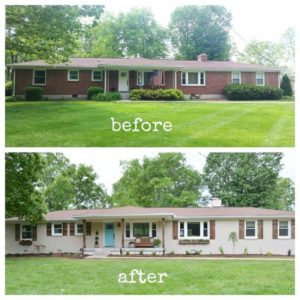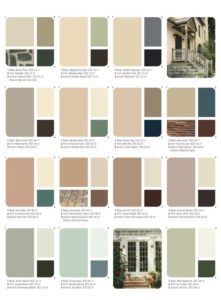Old wood siding, fast becoming a dinosaur in new construction, regularly needs the protection of a new coat of paint, so I bought a Xboost Turbine Wagner sprayer (more power, less time) realizing I do not have to be fancy but just get paint on the bare wood. Plants and shrubs mostly cover the side of my house.
A good paint job can last 10 years. The key is proper preparation. Here are steps to take to make sure your exterior paint job looks great, adds value to your home, and lasts a long time.

Step 1: Get the Lead Out
Do-it-yourselfers are not obligated to follow EPA regulations for lead-safe practices, as professional paint contractors must. But if your home was built before 1978, when lead paint was banned for residential use, you should protect yourself and your neighbors from airborne lead particles.
Step 2: Wash the Exterior
Mildew thrives under fresh paint, which won’t adhere well to dirty, grimy, spore-sporting exterior walls. You can hand-apply the solution with a sponge, which will take forever and many trips up and down the ladder. Or, hire a pro to pressure wash siding—not a task for an amateur, who can damage siding by pushing water under boards.
Step 3: Scrape off Loose Paint
A handheld scraper is usually the best tool for the job, though you can also use a hot-air gun or infrared paint stripper. Never use an open-flame torch, which can easily start a fire and is illegal in most states unless you have a permit.
Step 4: Sand Rough Spots
A pad sander or random-orbit fitted with 80-grit sandpaper will smooth out any remaining rough spots. Take care not to push so hard that you leave sander marks in the wood. To be lead safe, use sanders fitted with HEPA filters.
Step 5: Fill and Repair
Fill minor holes or dings in the siding with a patching putty or compound such as Zinsser’s Ready Patch ($20 per gallon). If you’ve got a major rot problem, summon a carpenter to replace the bad wood. Also, fix drainage problems that cause water to pool and promote rot.
Step 6: Apply Primer
Apply primer immediately after preparing wood siding. White, gray, or tinted primer provides an even base for topcoats to adhere to, and a uniform canvas from which to survey your work. Small gaps in joints and around doors, windows, and other spots where horizontals meet verticals will all stand out in high relief, showing where you need to fill in with caulk.
If you’re painting over bare wood or existing latex paint, then latex primer is fine. But if you’re painting over multiple coats of oil-based paint, it’s best to stick with a new coat of oil-based primer.
Step 7: Caulk All Joints
Spring for the $7-a-tube polyurethane caulks with 55-year warranties, which will stand up to weather better than 35-year caulks that cost less than $3. The average house requires about seven tubes of caulk.
Step 8: Choose the Right Paint
Painting with water-based acrylic latex is so much easier than dealing with oil-based paints. If your house already sports an oil-based paint, which is more durable than latex, you’ll have to stick with it.
Choose finishes carefully. As a rule, the higher the sheen, the better the paint is at blocking the sun’s damaging rays. Satin is fine for shingles or clapboards, but you’ll want gloss paint to protect high-traffic parts of a house, such as window casings, porches, and doorframes. A gallon of premium exterior latex costs $35 to $45.
Step 9: Apply Top Coat(s)

Less is more when it comes to applying top coats. More layers can result in paint flaking off through the years; less paint bonds better to layers beneath.
If you’re going from a white house to yellow or cream, you might be able to get by with one coat. Going from a light to a dark house, and vice versa, usually requires two coats.

3 comments for “Good Time to Give the Exterior Part of Your Home a Facelift”